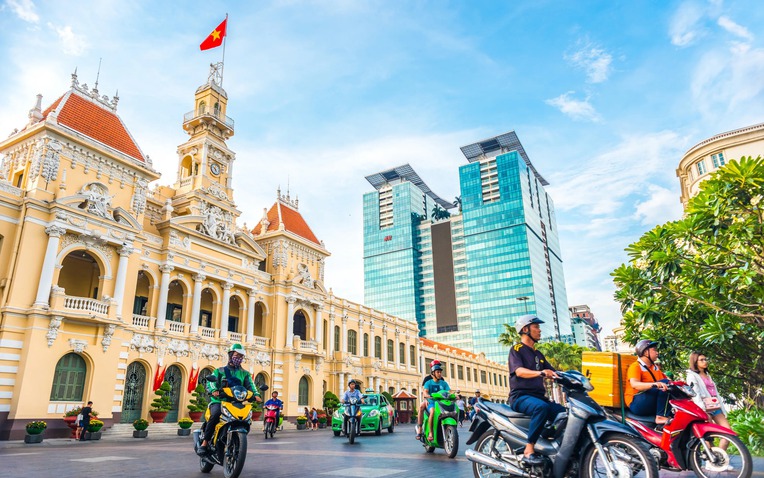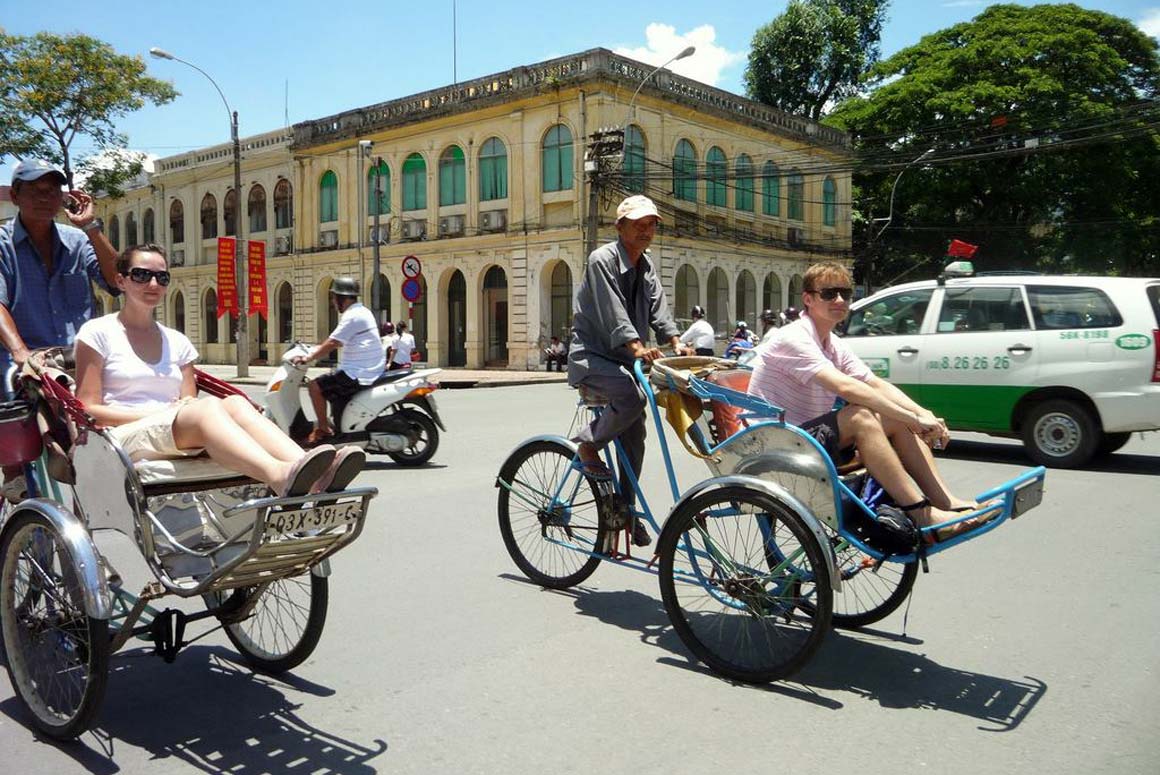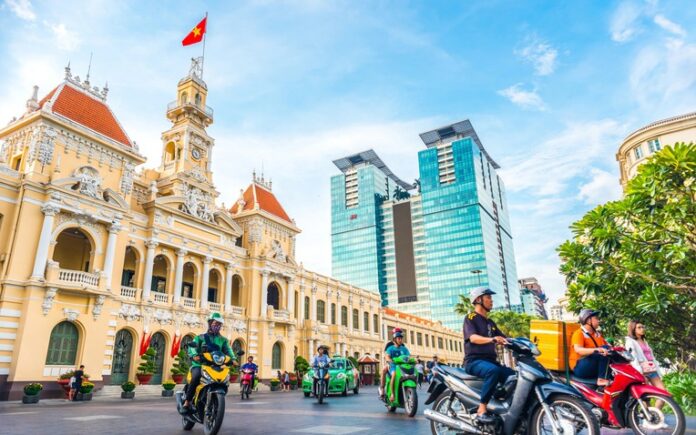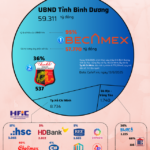
On June 12th, the National Assembly officially passed a resolution to rearrange provincial-level administrative units, resulting in a total of 34 provinces and cities across the country. The resolution took effect immediately.
As a result, the entire area and population of Ho Chi Minh City, Ba Ria-Vung Tau Province, and Binh Duong Province will be merged to form a new city named Ho Chi Minh City. The new Ho Chi Minh City will cover an area of 6,772.59 square kilometers and have a population of 14,002,598 people, sharing borders with Dong Nai, Dong Thap, Lam Dong, Tay Ninh, and the East Sea.
The combined Gross Regional Domestic Product (GRDP) of the new Ho Chi Minh City (including the current Ho Chi Minh City, Binh Duong, and Ba Ria-Vung Tau) is expected to reach approximately VND 2.71 quadrillion, equivalent to USD 114.3-121.1 billion. This accounts for nearly 24% of Vietnam’s total GDP. Specifically, Ho Chi Minh City contributes approximately VND 1.78 quadrillion (about USD 70 billion), Binh Duong contributes about VND 520,205 billion (around USD 21.7 billion), and Ba Ria-Vung Tau contributes approximately VND 417,306 billion (about USD 17.4 billion). Following the merger, the GRDP per capita of the new Ho Chi Minh City is estimated to be around USD 9,600.
According to last year’s data, the GDP of Myanmar was approximately USD 70-80 billion, Cambodia was about USD 30-35 billion, Laos was around USD 20 billion, and Brunei was estimated at USD 15 billion.
With a GRDP of approximately USD 114-121 billion, the new “super city” of Ho Chi Minh City will surpass the GDP of countries such as Myanmar, Cambodia, Laos, and Brunei. It will also exceed the economic scale of some major regional cities such as Kuala Lumpur (about USD 80 billion) and Jakarta (about USD 100 billion). Additionally, it will rival the size of Bangkok (about USD 130 billion).
This merger is not just a simple administrative boundary adjustment but also a strategic move to create a large-scale economic and urban center with competitive advantages in the region. Ho Chi Minh City is currently the country’s economic hub and the center of finance, trade, and services. Binh Duong, known as the “industrial capital,” boasts a rapid urbanization rate and a young population. Ba Ria-Vung Tau, on the other hand, has strategic advantages in seaports and tourism. This combination is expected to create a more balanced and sustainable multi-pillar economy, fostering infrastructure development, especially in transportation and high-tech industrial zones.
The New Ho Chi Minh City: Forging a World-Class Metropolis
The merger will give birth to a world-class metropolis, specifically, the new Ho Chi Minh City will emerge as a “super city,” boasting a vast expanse of land and a massive population that can rival major economic centers in the region and across Asia.

Additionally, this merger creates new development opportunities by providing room for urban redistribution, population dispersal, and reduced pressure on the current inner-city area of Ho Chi Minh City. It also generates a synergistic effect, fostering robust growth in the merged provinces. The expanded Ho Chi Minh City will act as a nucleus, catalyzing comprehensive development in the Southeast, Southwest, Central Highlands, and South-Central regions.
The merger also presents an opportunity to standardize transportation infrastructure. Specifically, it will expedite the completion and standardization of key transportation projects like the Ring Road 3 and Ring Road 4, as well as vital highways such as Ho Chi Minh City-Long Thanh-Dau Giay and Bien Hoa-Vung Tau. These inter-provincial routes will form an intra-regional network, facilitating seamless travel and trade.
Furthermore, the merger will boost logistics and seaport development. This is a significant step towards establishing an international-standard logistics hub, with a particular focus on developing the Cai Mep-Thi Vai port cluster into a global transshipment hub for import, export, and cargo transshipment.
The expansion of the urban rail network is another advantage. There are already plans to extend the urban railway system to cover the entire expanded Ho Chi Minh City, connecting Binh Duong and Ba Ria-Vung Tau and even reaching Tay Ninh, thereby fostering stronger regional linkages.
Unveiling the $3 Billion Asset Portfolio: Ho Chi Minh City’s New Administrative Holdings Post-Merger with Binh Duong and Ba Ria – Vung Tau
“The most valuable asset is the equity stake in the Corporation for Industrial Development and Investment – Joint Stock Company (Becamex IDC), valued at over VND 58.7 trillion, previously owned by Binh Duong.”
The Vibrant Saigon River: Unveiling Ho Chi Minh City’s Riverside Renaissance
Vice Prime Minister Tran Hong Ha has approved the adjusted master plan for Ho Chi Minh City’s development until 2040, with a vision towards 2060. This decision, outlined in Resolution No. 1125, charts a course for the city’s future, addressing key aspects of urban planning and development to create a sustainable and thriving metropolis.
Uncover the Ultimate Guide to Safeguarding Your Digital Empire: Unmasking the 21,000 International Credit Card Fraud Syndicate
The Danang police have recently busted a large-scale cybercrime ring led by two individuals who illegally used Visa, Mastercard, and Discover card data of foreigners to make purchases on Amazon, reaping illicit profits.














































